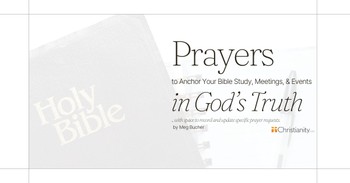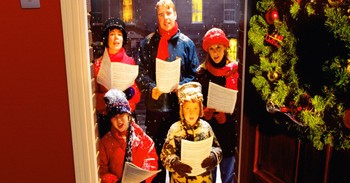There are numerous times when high places are mentioned in the Bible. They were altars built on a hill or mountain for religious purposes. What people used them for said a lot about their lives.
Where Do We See High Places in the Bible?
High places are primarily mentioned in the Old Testament. They were places of worship where the people would offer sacrifices to gods. Usually, the Old Testament mentions them being used for offering sacrifices to the pagan deities of the Canaanites, Ammonites, and Moabites.
In the Old Testament, the Israelites went through various generations of building pagan high places, then removing them when they returned to following God. After the exile, those who returned to the land were much more zealous about removing high places from the region.
What Did People Sacrifice on Was the Function of Pagan High Places in the Bible?
The main function of Canaanite high places was to sacrifice animals or children to Ba’al or Asherah, the two main deities of the region. They were places of worship where people would go up to the top of a hill or mountain around them and offer their gifts of worship to these false deities.
Children were sacrificed to Molech at several points in Israelite history. Child sacrifice directly violated God’s commands in Deuteronomy. Kings who worshipped Molech included Solomon (1 Kings 11:7-8), King Manasseh, and King Ahaz.
Do Holy People Ever Use High Places in the Bible?
After the tabernacle was built, the Israelites were forbidden from sacrificing at high places (Deuteronomy 12:11-14). They were forbidden from co-opting the pagan high places to worship Yahweh because it could easily lead to syncretism. Syncretism is the idea that multiple faiths can be worshipped at the same time in the same place. God strictly forbade syncretistic practices, as shown numerous times throughout the Torah (the first five books of the Old Testament).
An interesting exception to the rule about Israelites not sacrificing on high places exists. It comes in 1 Samuel 9:12. This verse says that Samuel went to sacrifice on a high place, yet the narrative doesn’t show God condemning him. This is the only record of sacrifice on a high place not being condemned. Samuel’s action was acceptable because the previous place of worship, Shiloh, had been destroyed. Furthermore, at the time, the ark of the covenant was in a different place than the tabernacle, and there was no designated place to worship God. So, at this particular time, God accepted the sacrifices offered at this high place. God will make concessions based on what resources are available to his people.
First Kings 3 offers further insight into this. God accepted the worship of his people based on what they had. However, once the temple was built, high places were always viewed negatively because God had established a way that he wanted to be worshipped.
What Were Some of the Most Famous High Places in the Bible?
In Jeremiah 7:31, Jeremiah describes the high plains of Hinnom. The valley was a place of child sacrifice to several regional deities. Hinnom was a valley outside of Jerusalem that God condemned because of the abominations done there. This place was significant because it was right outside Jerusalem—where God dwelt. To have such an abomination in such proximity to the Holy of Holies disrespected God.
The Lord said that it would become a graveyard and a place of burning refuse (Jeremiah 7:32). This is exactly what happened. Second Kings 23 explains how King Josiah destroyed its high place and burned human bones in the valley to make it unclean—no one would enter it without becoming unclean. After the exiles returned, the valley of Hinnom became known by its Aramaic name Gehenna.
Does Jesus Say Anything about High Places in the Bible?
Jesus refers to Gehenna on several occasions: this is the word he uses to describe hell. As mentioned previously, it was a place of child sacrifice. In the post-exile period, it was considered unclean and used as a place where trash was continually burned. That is why it became associated with destruction and eternal fire.
High places also appear in Jesus’ conversation with the woman at the well. The Samaritan woman mentioned Mt. Gerezim, where the Samaritans worshipped God. Samaritans were the descendants of the 10 northern tribes of Israel who intermarried with the Assyrians who conquered them. Samaritans only believed in the Torah, not the entire Old Testament. They attached special significance to Mt. Gerezim because God blessed the people of Israel on that mountain before they entered the promised land (Deuteronomy 11:29). Thus, they modified the place where God was worshipped—a syncretistic act.
Jesus answered the Samaritan woman’s question about where people should worship—Mt. Gerezim or Jerusalem—by saying it doesn’t matter which mountain people worship God on, provided they worship in Spirit and truth (John 4:21-24).
These words underlie the real reason that God banned high places in the Old Testament. He forbade the Israelites from sacrificing in altars not created for Him—geography was not the problem, but the intent.
Why Did People Keep Rebuilding High Places in the Bible?
Wicked Israelite and Judahite kings rebuilt the high places to appease the people who were used to the patterns of worship. Only four Judahite Kings removed the high places. These were Asa, Jehoshaphat, Hezekiah, and Josiah.
Asa was the first king to begin the arduous process of removing the high places throughout the kingdom of Judah. He removed most of them from the cities (2 Chronicles 14:3,5) but did not finish the job (15:17).
The People of Israel and Judah continually rebuilt the high places because they also worshipped other gods in the region. It was considered unpopular when Asa removed all the high places in the cities. His son Jehoshaphat had to redo his father’s work because the people continued sacrificing to Baal and Asherah.
Hezekiah restarted the process of removing the high places from Judah that had built up in the centuries since Jehoshaphat removed them. He did not finish the job, however. His son Manasseh built them up even more than his father tore them down.
Hezekiah’s great-grandson Josiah cleaned up the idolatry his father and grandfather corrupted Israel with. He broke down all the high places and idols in the land (2 Chronicles 34). After Josiah, the Judahites went into a downward spiral, as recorded in the book of Jeremiah. They continued going after the other gods of the region and rebuilt the high places. They continued in their idolatry until they were taken captive by the Babylonians.
The Northern Kingdom of Israel set up its own religion, complete with high places, centered around two Golden Calves. Its two main centers were Dan and Bethel (north and south, respectively). Holy people condemn these two altars as high places throughout the book of 1 Kings and the prophetic books.
As a result of their unbelief, no Israelite king removed high places. In fact, King Ahab built many high places to please his wife, a pagan priestess named Jezebel. This rampant idolatry was one of the primary reasons why the northern kingdom went into exile first.
Can We Learn Anything from the High Places in the Bible?
One things we can learn from high places is we should worship God the way he wants to be worshipped. When people try to worship God on their own terms, it often leads to mishmashing religions or beliefs. God helps prevent this by setting out patterns of what true worship looks like.
The main takeaway from high places is that the human heart is a factory for idols. We can always find something other than the true and living God to fill our hearts. The high places warn us of the dangers of worshipping something other than God. Believers today don’t sacrifice to pagan altars. However, we find our thoughts and actions dictated by things other than God. As Martin Luther said, “Show me where a man spends his time and money and I will show you his god.”
Photo Credit: Getty Images/for personal or commercial purposes
Ben Reichert works with college students in New Zealand. He graduated from Iowa State in 2019 with degrees in Bioinformatics and Computational Biology, and agronomy. He is passionate about church history, theology, and having people walk with Jesus. When not working or writing you can find him running or hiking in the beautiful New Zealand Bush.
This article is part of our Bible resource for understanding the significance and meaning of biblical phrases and ideas. Here are our most popular Bible articles to grow in your knowledge of God's Word:
Promises of God in the Bible
Is "This Too Shall Pass" in the Bible?
What Was the Ark of the Covenant?
Top 10 Bible Stories for Kids
“Iron Sharpens Iron” in Proverbs 27:17
"Fearfully and Wonderfully Made" in Psalm 139
“Be Still and Know That I am God” in Psalm 46:10
"No Weapon Formed Against Me Shall Prosper" - Isaiah 54:17



.jpg)
